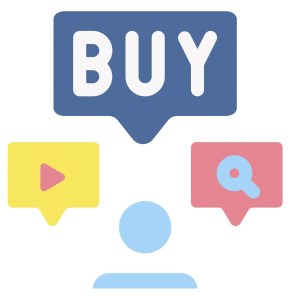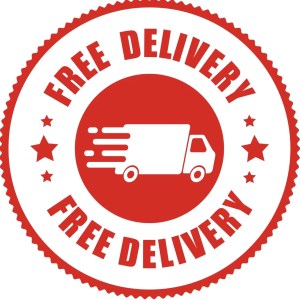Prefer to listen? Click here to check out the podcast version on YouTube
You don’t need a big budget to grow your business—just the right strategies.
From the busy streets of Osu to the vibrant Makola Market, small businesses in Ghana must adapt and be smart to survive.
This guide shares practical, affordable tactics used by real small businesses to build loyal customer relationships, increase visibility (online and offline), and drive sales without expensive ad campaigns.
Each idea includes simple steps to implement today, real-world examples you can adapt, and free or cheap tools to maximize results.
Whether you run a café, retail shop, or service business, these approaches work when you focus on customer experience, leverage existing platforms (like WhatsApp and social media), and track what resonates.
As the saying goes, “Marketing isn’t about spending more—it’s about connecting smarter.”
The following ideas are designed especially for Ghanaian entrepreneurs.
Each comes with practical steps and real-life examples to help you apply actions that work for your business today.
Idea 1: Help Before You Sell
Core Concept:
Offer a “try before you buy” experience that builds trust and introduces customers to your products, whether it’s a taste of your new drink or a discount on a first haircut.
Tool 1: Personal Birthday Calls
Action: Reach out to customers on the phone and wish them a happy birthday.
Why It Works: Wishing a person a happy birthday can strengthen customer relationships and enhance loyalty.
How to Do It:
- Call to wish them Happy Birthday yourself.
- Keep a record of customers’ birthdays using your Phone’s contact App.
- Offer a special birthday discount or gift during the call
Tool 2: Birthday Discounts on Products/Services
Action: Provide exclusive discounts on products for customers celebrating their birthdays.
Why It Works: Offering birthday discounts can increase customer loyalty and sales.
How to Do It:
- Send personalised messages with discount codes valid during their birthday month.
- Ensure the offer is easy to redeem, either online or in-store.
Tool 3: First-Time Customer Bonus
Action: Offer bonuses, such as free delivery or discounts, on a customer’s first purchase.
Why It Works: First-time purchases encourage new customers to be loyal.
How to Do It:
- Promote the bonus clearly on your website and social media channels.
- Ensure the offer is straightforward to claim.
Real-Life Examples:
- If you run a small fashion business on Instagram, you could say, “Get GH₵10 off your first purchase.” It’s a small but thoughtful offer that can encourage someone to try your items for the first time.
- If you sell pastries or snacks, you can say, “Free delivery for first-time orders within East Legon.” This kind of offer makes it easier for new customers to place an order without hesitation.
Tool 4: Surprise Gifts with Orders
Action: Include unexpected small gifts with customer orders to delight them.
Why It Works: Surprise gifts can enhance the customer experience and encourage repeat business.
How to Do It:
- Select affordable, relevant items to include as gifts.
- Personalise the gift when possible, to increase its impact.
Real-Life Examples:
- Imagine you sell locally made jewellery. You could include a small thank-you card with every order or even a free earring or ring holder with each jewellery purchase.
- If you sell food items, maybe you could add a small packet of groundnuts or a mini drink to orders over a certain amount.
Tool 5: Free Samples for New Customers
Action: Provide free samples of your products/services to potential new customers.
Why It Works: Offering free samples or services can attract new customers by allowing them to try your product or service.
How to Do It:
- Distribute samples at events, in-store, or through targeted mailings.
- Follow up with recipients to gather feedback and encourage purchases.
Learn More:
Real-Life Example:
- Imagine you sell homemade soaps. You could give out small samples at local markets or around your community—just a small piece of soap for people to try.
- If you sell snacks, you could offer small free samples of cupcakes at a busy palace such as a bus stop or market.
Tool 6: Improve Customer Follow-Up
- Send thank-you messages after purchases
- Request customer feedback on WhatsApp or SMS
Idea 2: Be Found Where People Are Searching
Core Concept:
If customers can’t find your business online, they won’t visit or buy.
Make sure your business appears when someone searches for “best jollof rice restaurant Accra” or “hair salon in East Legon.”
What Can You Do?
Tool 1: Google Business Profile
Action: Register your business on Google Business Profile so that your shop shows up on Google Maps and in local search results.
- Official link: Google Business Profile
Tool 2: Learn How — Watch this step-by-step tutorial on setting up your Google Business Profile:
Idea 3: Use WhatsApp as Your Customer Manager
Core Concept:
In Ghana, WhatsApp is how we stay in touch with family, friends, and now… customers.
Use WhatsApp Business to handle orders, answer questions, and keep your regular customers returning.
What Can You Do?
Tool 1: WhatsApp Business App
Action: Download and set up WhatsApp Business to create a product catalog and use quick replies for common questions.
- Android: Google Play Store
- iOS: Apple App Store
Tool 2: WhatsApp Automation via Web Tools
Action: Use free web tools to set up broadcast lists and automate simple messaging.
Resource – Video:
Idea 4: Partner Locally, Grow Strategically
Core Concept:
Collaborate with other local businesses in Ghana to cross-promote each other’s products or services.
Such partnerships can expand your customer base, enhance brand visibility, and foster community engagement.
What Can You Do?
Tool 1: Implement Cross-Promotion Strategies
Action: Develop mutual agreements with complementary businesses to promote each other.
This can be achieved through various methods:
- Flyer Exchange: Distribute each other’s flyers at your respective business locations.
- Social Media Shoutouts: Feature each other’s products or services on your social media platforms.
- Joint Discounts: Offer bundled discounts when customers purchase from both businesses. How to Increase Sales Through Cross-Promotion
- Collaborative Events: Host events together to attract a broader audience.
Real-Life Example:
Imagine a juice bar in Osu that partners with a nearby bakery. Customers who buy a smoothie receive a discount voucher for the bakery, and vice versa.
Tool 2: Learn How to Create Beneficial Partnerships
Action: Educate yourself on forming effective business partnerships. Understanding the principles of successful collaborations can lead to more fruitful outcomes.
Real-Life Examples in Ghana
- Fashion and Accessories: A clothing boutique in Accra collaborates with a local jewellery maker. They display each other’s products in their stores and promote them on social media.
- Food and Delivery Services: A restaurant partners with a local delivery service. Customers ordering from the restaurant receive discounted delivery rates, benefiting both businesses.
- Artisans and Markets: Local artisans team up with market vendors to showcase their crafts, attracting more customers to both stalls.
Tips for Success in Joining Forces
Real-Life Example:
Let’s say you make and sell meat pies and chips from your house. If there’s also a lady in your area who sells fresh fruit juice. You can
- Choose Complementary Partners:
Your food and her drink go well together. You both sell to the same kind of people—like workers, students, or parents who want something quick to eat. - Set Clear Objectives:
You agree to help each other. When someone buys your meat pie, you tell them, “There’s nice fresh juice just down the road—go try it.” She also tells her juice buyers, “If you want something to eat with this, go and buy a meat pie from my friend.” - Evaluate and Adapt:
After one or two weeks, you both ask: Are more people buying? Are they asking about each other’s food or drink? If it’s helping, you can keep doing it or even plan a small promo together, like, “Buy a meat pie and get a small discount on juice.”
Idea 5: Build a WhatsApp Community Group
- Core Concept:
Instead of just adding people to one WhatsApp group, you can now create a WhatsApp Community. This helps you manage many groups in one place and makes it easier to send updates to all your customers.
If you run a small business in Ghana—whether it’s a boutique, food joint, or hair salon—this is a great way to connect with your regular customers, give them offers, and keep them coming back.
What Can You Do?
Tool 1: Create a WhatsApp Community
Action: Start a WhatsApp Community for your business. You can organise your customers into different groups, such as:
- VIP Customers
- Product Categories (e.g., Men’s Shoes, Weekend Specials
- New Arrivals
Real-Life Example:
If you sell clothes in Madina, create separate groups within your community for:
- Men’s Wear
- Women’s Wear
- Discount Offers
How to Set It Up:
- Open WhatsApp
- Tap the Communities tab
- Tap New Community
- Add existing groups or create new ones based on your business needs
Tool 2: Keep People Engaged
Action: Don’t just post adverts. Use your community space to:
- Ask engaging questions (e.g., “Which colour of shoe should we restock?”)
- Share helpful tips (e.g., “How to style Ankara”)
- Announce sales or new stock arrivals
- Post polls to collect feedback (e.g., “Which flavour do you prefer: mango or pineapple?”)
Real-Life Example:
If you run a small food spot in Dansoman, ask your customers what combo they’d love for the Friday Special. Let them vote directly inside the group!
Tips for Using WhatsApp Communities Well
- Only post useful stuff—don’t spam.
- Reply when people comment or ask questions.
- Show behind-the-scenes moments (e.g. how you package orders).
- Reward your active members with small discounts or shout-outs.
Learn More — Easy Guides to Help You
- How WhatsApp Communities Work – Timeline AI
- Simple Guide to Creating WhatsApp Communities – TopBubble
- WhatsApp Business Communities – Step by Step
Tool 3: Expand Beyond WhatsApp Communities
- Create a simple Telegram channel for announcements (for customers who prefer it)
- Use Facebook Groups for community engagement
Final Tip:
Start small. Add your loyal customers first and build from there.
Idea 6: Let Your Customers Do the Marketing
Core Concept:
Happy customers are your best promoters. Encourage them to share their positive experiences with friends and on social media.
What Can You Do?
Tool 1: Let Happy Customers Promote You
Action: Your happiest customers can help spread the word about your business.
Here’s how to make it easy for them—and useful for you:
- Ask your customers to take simple photos or videos while using your product or enjoying your service.
- Tell them to share it on WhatsApp, Instagram, Facebook, or TikTok and tag your business.
- When they post it, you can also repost it on your page.
Why It Works:
- People trust real photos and videos more than adverts.
- It helps you reach new people without paying for ads.
Tips to Make It Work:
- Gently ask happy customers, “Please share and tag us if you liked it.”
- You can even give a small thank you, like a repost, shoutout, or small discount next time.
Real-life Example:
If you braid hair, ask your clients to take a selfie after you finish. When they post it and tag you, other people will see your work and may come to you too.
Learn More:
·
Tool 3: Showcase & Track on Social Media
Action: Use Instagram Stories, WhatsApp Status, and Facebook posts to showcase real customer reviews and testimonials. Create highlight sections like “Happy Clients” or “Customer of the Week.”
Real-Life Example:
You can also create a hashtag (e.g., #MadeWithLoveGH or #StyledBy[YourBusinessName]) that customers can use when posting about your product or service.
Tool 3: Read these blogs to understand how referral systems and customer reviews help grow trust:
- https://www.expandgh.com/4-simple-ways-to-get-new-customers-for-your-business/
- https://www.getbumpa.com/blog/how-to-collect-customer-reviews-and-boost-sales-with-them
- https://prolanzdigitals.com/fast-get-new-customers-business-in-nigeria/
Tool 4: Leverage Social Media More Effectively
- Post consistently (e.g., 3-5 times per week)
- Use Instagram/Facebook Reels for short, engaging videos
- Run polls or Q&A sessions to boost engagement
- Collaborate with micro-influencers (even local ones with small followings)
Idea 7: Sell Where People Already Shop – Digital Makola
Core Concept:
You don’t need a fancy website to start selling online. Platforms like Jiji, Tonaton, and Facebook Marketplace already attract thousands of Ghanaian shoppers daily.
What Can You Do?
Tool 1: Jiji Ghana Seller Centre
Action: Register on Jiji Ghana to list your products and take advantage of an already active customer base.
- Official Link: Jiji Ghana
- Resource – Official Guide: How to Sell on Jiji Ghana
Tool 2: Facebook Marketplace
Action: List your products on Facebook Marketplace to reach a broad audience.
Resource – Step-by-Step Guide:
BONUS IDEAS
Bonus Idea 8: Run a Social Referral Giveaway
Core Concept:
Boost your social media presence by hosting a referral contest. Encourage your customers to refer friends and reward top referrers with gifts or cash incentives.
What Can You Do?
Tool 1: Referral Contest via Social Media
Action: Launch a contest on WhatsApp, Instagram, or Facebook. Ask customers to share your post or refer to their contacts. Reward the top three referrers with prizes.
How to Implement This
Tool 1: WhatsApp Referral Contest
Action Steps:
- Create a Broadcast List: Compile a list of your existing customers on WhatsApp.
- Design a Shareable Message: Craft a message that includes:
- A brief description of your referral contest.
- Instructions on how to participate.
- Details of the prizes to be won.
- Track Referrals: Ask new customers to mention who referred them when making a purchase or inquiry. Keep a simple log to track referrals.
- Reward Top Referrers: At the end of the contest period, reward the customers with the highest number of successful referrals.
Real Life Promotion Message:
Refer & Win!
Love our products? Tell your friends!
For every friend you refer who makes a purchase, you get a point.
The top 3 referrers this month win amazing prizes!
Let’s grow together!
Resource – Video Tutorial:
Tool 2: Instagram & Facebook Giveaway
Action Steps:
- Create an Engaging Post: Design a visually appealing post announcing your referral contest. Include clear instructions and prize details.
- Encourage Sharing:
- Ask followers to tag friends in the comments.
- Share the post to their stories or feed.
- Follow your page
- Track Engagement: Use the tagged comments and shared posts to track participants and their referrals.
- Announce Winners: After the contest period, announce the winners publicly and thank all participants.
Resource Guide:
How to Run a Facebook Giveaway: A 6-Step GuideMarketing Scoop
Prize Ideas Suitable for Ghanaian Customers
- Discount vouchers for future purchases.
- Free products or services.
- Branded merchandise (e.g., T-shirts, mugs).
- Mobile airtime or data bundles.
- Cash prizes via mobile money platforms.
Bonus Idea 9: Create Digital Flyers with Canva
Core Concept:
Attractive digital flyers can promote your offerings on social media. Use local design elements and colors that resonate with Ghanaians.
What Can You Do?
Tool 1: Design Flyers with Canva
Action: Use Canva to create digital flyers that advertise offers, events, or new products.
Resource – Blog:
- A Beginner’s Guide to Using Canva for Social Media Designs
- Design Signboards in Canva: A Tutorial for Beginners
- Official Link: Canva
Tool 2: Share Flyers Digitally
Action: Distribute your flyers via WhatsApp groups, Facebook pages, and Instagram stories using local hashtags like #AccraDeals and #MadeInAccra.
Bonus Idea 10: Using AI To Further Your Business
Core Concept:
Artificial Intelligence (AI) isn’t just for tech companies abroad—it can work for small businesses here in Ghana, too.
What Can You Do?
Tool 1: Instagram Prompt for a Captivating Post
Prompt:
“Write a captivating Instagram caption to promote a weekend sale at my boutique in Osu. Make it catchy, and fun, and add Ghanaian slang or emojis.”
Example Output:
🔥 Weekend VIM SALE dey dropping! 🔥 Come vibe with the best styles in town this Friday–Sunday. Osu to be hot! 💃🏽🕺🏽 #ShopLocalGH #WeekendSale #OsuVibes
👔 Tool 2: LinkedIn Prompt for a Professional Post
Prompt:
Write a LinkedIn post sharing 3 lessons I learned from running a small business in Accra this year. Keep it professional but relatable to other entrepreneurs in Ghana.
Example Output:
Running a small business in Accra has taught me more than any textbook ever could.
✅ The hustle is real, but discipline is key
✅ Delivery & customer service make or break your rep
✅ Never underestimate word-of-mouth
Let’s keep building the future of Ghanaian entrepreneurship 🇬🇭 # Entrepreneurshipgh #SmallBusinessAfrica
Tool 3: Facebook Prompt for Community Engagement
Prompt:
“Create a Facebook post encouraging people in Accra to tag a friend they’d bring to my food spot this weekend for a free jollof tasting. Make it engaging and informal.”
Example Output:
Who loves free jollof? 😋 Tag that friend who no dey miss any food joint and come vibe this weekend! Jollof tasting from 1 PM – first 30 people only! Let’s chop and chill 🥘🔥 #JollofWithVim #AccraEats #FreeTing
Tool 4: WhatsApp Broadcast Prompt
Prompt:
Write a short WhatsApp message reminding my customers about a 2-day discount on all hair products. Keep it polite and friendly.
Example Output:
Hi dear 💫 Just a quick reminder: our 2-day sale on all hair care products is still on! Enjoy up to 20% off until tomorrow evening. Don’t miss out! 🛍️ Call/WhatsApp to order. #SupportLocal
Tool 5: Inspirational Prompt (General Use)
Prompt:
“Write a motivational quote for young Ghanaian entrepreneurs to post on Monday morning to inspire others to stay consistent.”
Example Output:
“Waking up early is not the hustle—showing up every day with purpose is. Keep building. Ghana needs your ideas.” 💡🇬🇭 #MondayMotivation #GhanaHustle #YoungEntrepreneursGH
Tool 6: Twitter Prompt for a Quick, Punchy Post
Prompt:
“Write a witty tweet about how small businesses in Ghana are the real MVPS.”
Example Output:
The lady selling waakye from her porch feeds more people than some offices. Ghanaian small biz owners = MVPS. 🫡 #GhanaHustle #SupportLocal
🧠 More AI-Powered Ways to Grow Your Business in Ghana
1. Generate Business Names
Prompt:
“Give me 5 catchy name ideas for a food delivery business in Kumasi.”
Example Output:
- ChopChop Express
- Ashanti Eats
- Fast Pot GH
- Twa Dɛ Delivery
- Kumasi Kitchen Kart
2. Write Product Descriptions
Prompt:
“Write a short description for the handmade shea butter soap I sell in Ghana. Highlight its benefits and organic ingredients.”
Example Output:
Nourish your skin the natural way with our handcrafted shea butter soap—made in Ghana with love. 🌿 100% organic. Perfect for sensitive skin. Smells amazing too!
3. Draft Payment Reminders or Invoices
Prompt:
“Write a polite WhatsApp message to remind a client in Ghana that their balance of GHS 80 is due for last week’s cake order.”
Example Output:
Hi [Client Name], I hope you enjoyed the cake 🎂 Just a gentle reminder about the outstanding GHS 80 from your order last week. Let me know if you’d prefer MoMo or cash. Medaase 😊
4. Plan Your Weekly Social Media Calendar
Prompt:
“Create a weekly content calendar for my natural hair products brand based in Accra.”
AI can help you map out:
- Monday: Hair care tip
- Wednesday: Behind the scenes at the shop
- Friday: Customer testimonial
- Sunday: Soft sell product post
5. Suggest Promotional Ideas
Prompt:
“Suggest 3 low-cost promotional ideas for a boutique in East Legon.”
Example Output:
- “Bring a friend” discount
- Mid-week Instagram Live styling session
- WhatsApp sticker bundle for referrals
Tools to Use AI for Free:
- ChatGPT (OpenAI)
- Copy.ai – great for marketing content
- Writesonic – for social captions and ad copy
Bonus Tool 11: Make It Easy for Customers to Pay with MoMo and Digital Payments
Action:
Let your customers know they can pay you through mobile money (MoMo), and make the process as simple as possible.
Why It Works:
- Many people in Ghana prefer to use MoMo—it’s fast, safe, and they don’t need to carry cash.
- When paying is easy, customers are more likely to buy from you again.
- Cashless payments also make your business look professional and trustworthy.
How to Do It:
- Clearly show your MoMo number on your flyers, Instagram page, WhatsApp status, or even write it neatly on your delivery bag or shop wall.
- Use payment links (like ExpressPay, Hubtel, or your bank app) so you can just send a link on WhatsApp for quick payment—no long instructions.
- Offer a small discount or bonus to people who pay by MoMo. For example:
“Pay with MoMo and get GH₵2 off” or
“Cashless customers get free delivery today.”
Real-Life Example:
Let’s say you sell secondhand clothes online. Instead of waiting for someone to send you MoMo manually and then confirm, you send them a payment link they can click and pay in seconds.
Or, if you sell food and offer delivery, you can say, “Pay by MoMo and get a free bottle of water.” It’s a small cost to you, but customers will appreciate it.
By consistently applying even a few of these low-cost strategies, you can effectively reach more customers, build stronger relationships, and grow your Ghanaian business without breaking the bank. Good luck!









